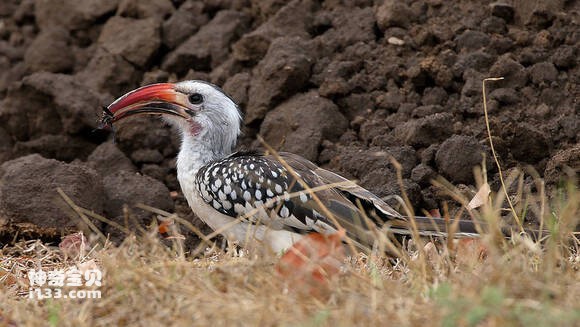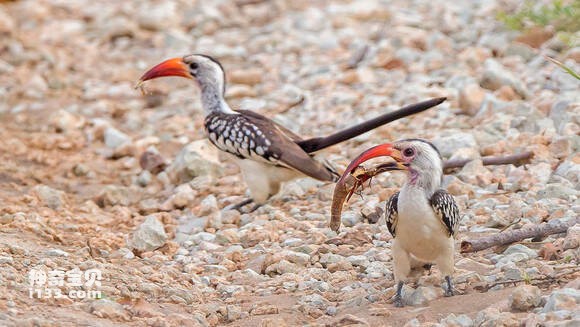Tockus erythrorhynchus
IUCN
LCBasic Information
Scientific classification
- name:Tockus erythrorhynchus
- Scientific Name:Tockus erythrorhynchus,Red-billed Hornbill,Northern red-billed hornbill
- Outline:Climbing birds
- Family:
Vital signs
- length:28-32cm
- Weight:No textual research information is available
- lifetime:No textual research information is available
Feature
Distribution and Habitat
The northern red-billed hornbill is found in central and southern Africa (including the southern Arabian Peninsula and the entire African continent south of the Sahara Desert (Tropic of Cancer).)
Appearance
Like most small hornbills, the northern red-billed hornbill does not have the signature bony crest that is characteristic of hornbills. In adulthood, both male and female hornbills have large curved red bills that account for one-third and a half of their body length. Its mouth is big, but it's not clumsy. The internal structure of the mouth is like a honeycomb, full of Spaces, which reduces weight and makes the mouth light and very strong. Northern red-billed hornbill cheeks, chin and throat parts are milky white, the top of the head is black, the neck below the cover feathers are black and white, the female bird's feather color is similar to the male bird, but the body size is smaller than the male. Their eyes, like those of other hornbills, have long beautiful eyelashes, which is rare among birds.
Details
Tockus erythrorhynchus, Red-billed hornbill, Northern red-billed hornbill, is one of 14 species of small hornbill.

The northern red-billed hornbill nests in tree holes and eats fruit and insects.

The northern red-billed hornbill every breeding season, the male bird will stand on the highest point of the tree branch, spread his wings, stand upright, shout loudly and jump up and down with the call. At this time, the males will call louder than each other, and the female will call to each other in the same way to show affection. Their nests are mainly natural holes in trees or holes formed by termite borer or tree decay over time. This kind of tree hole is comfortable and safe, and other hornbills like the red bill curved bill will use soil to close the hole hole, leaving only a small hole for the female bird mouth end can stretch out, so that the female bird incubates eggs in the hole, feed the baby, both safe and comfortable, not afraid of wind and sun, but also can protect the baby hornbill from snakes, monkeys and birds of prey and other threats and damage.

Nest sealing is mainly done by the female, and the male guards the nest to prevent other males from destroying the nest opening. Northern red-billed hornbills lay 1 to 3 eggs per litter, brooding is the work of female birds, northern red-billed hornbills love clean, female birds and chicks will directly excretion feces at the hole, male birds will also help clean up the garbage to keep the hole clean. The food during the whole incubation and brooding period is provided by the male bird. The male must fly out again and again to find food. If the female does not extend her beak to welcome him, the male will gently tap the tree trunk with his beak to notify her of feeding. After the chicks hatch, the female has to undergo a thorough moult, at which time she has little ability to fly, and after moulting, she pecks through the closure of the hole and flies out with the grown baby hornbills. So, by the end of the breeding season, both the female and the chick are fat, while the male is exhausted and skinny, a model bird father. If the male bird dies during brooding, the female birds and chicks living in the tree hole will also starve to death, so the hornbill is also known as the "love bird".
Protect wild animals and eliminate wild meat.
Maintaining ecological balance is everyone's responsibility!








